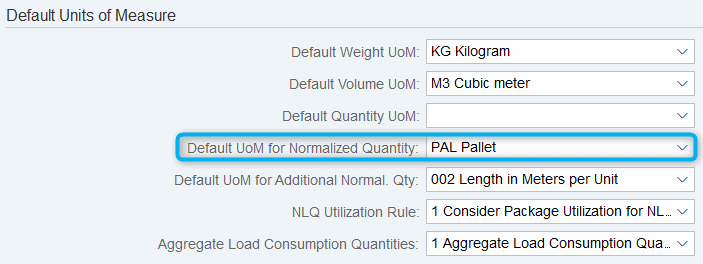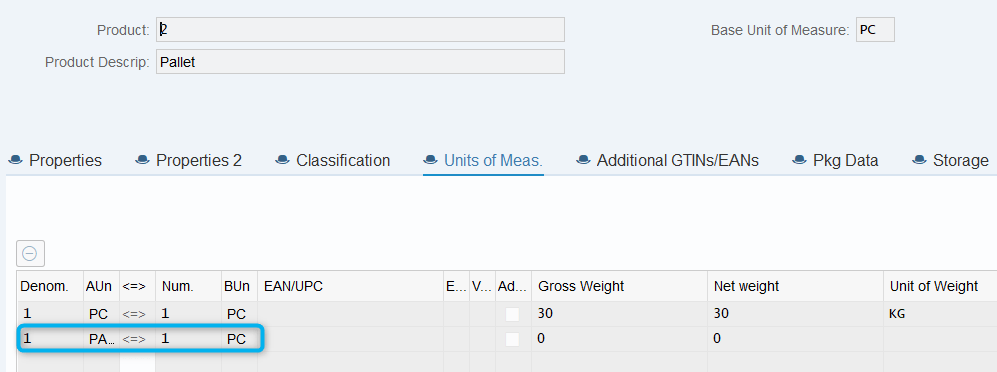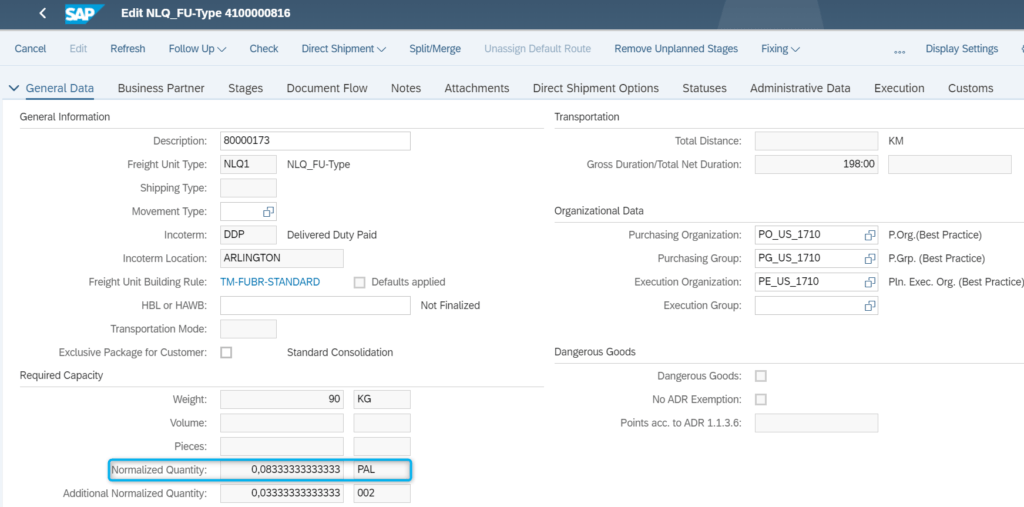The advantages of normalized load quantity (nlq) and capacities
If products of different types are planned on the same truck or in the same container, the dispatcher faces a challenge: How do I estimate the total capacity and consumption by the load correctly? Sometimes the load is planned down to pallet locations or a credit note is issued to the forwarding agent based on these. This reveals the enormous importance of a generic load volume calculator for all differing types of freight.
As part of our S/4HANA 1909 upgrade, we have examined the new Normalized Load Quantity (NLQ) functionality in SAP Transportation Management for you.
Who can use the new functionality?
The latest S/4HANA release supports load space planners in SAP Transportation Management in their activities: In connection with the Supply Chain Execution Package Builder, it is possible to use a normalized load space consumption quantity in SAP S/4HANA SUPPLY CHAIN FOR TRANSPORTATION 1909. This also applies to SAP Transportation Management 9.6 FPS02, which has been officially available since the beginning of October.
Cargo space planning
The normalized load space consumption quantity describes the part of a resource (e.g. a load space) that is “consumed” by products or packaging. This capacity consumption can be expressed in a standard unit of measurement (UoM) selected from a range of options such as CHEP or Euro pallets.
The UoM is used in the Package Builder to convert different units to a standard unit of measure, which is particularly advantageous when many different load carriers and packaging materials are used. This additional information is used for both automatic and manual planning. This optimizes the utilization of a resource within a freight order.
Prerequisites for the use of the normalized hold consumption quantity
You must always make settings in Customizing for the freight unit type, the freight order type and, if necessary, the freight unit type. You can select any standard unit of measure, but this must be the same in the documents mentioned. The following graphic shows how the standard unit of measure is defined.

Activation takes place by maintaining and selecting the normalized quantity or standard unit of measure in the Package Building Profile (profile for package creation in SAP GUI) and in the Planning Profile for the Transportation Cockpit.


When maintaining material and packaging material master data in SAP ERP, it is important that you specify the various load carriers with the corresponding conversion factor as an additional unit of measure: In this way, these specifications are correctly transferred to SAP Transportation Management for the products and can be displayed in transaction /SAPAPO/MAT1.

A further prerequisite is the definition of the conversion factors for the normalized load space consumption quantity for load carriers and packaging materials. These must be created as master data in the package type assignment (/SCMB/PB_PRD_PKG_ASS).

The capacity of the resource used, such as truck or trailer, must be maintained in the master data with the standard unit of measure for the normalized load space consumption quantity.
Conversion to loading meter for subcontracting
You can also specify an additional normalized unit (Additional Load Quantity, ALQ), which is calculated from the unit of measure of the normalized load space consumption quantity. This can be useful as information for subcontracting freight orders to external freight forwarders, for example, to represent the consumption of loading space in the unit of measure loading meter. To do this, the specification in the document flow document types must be analogous to the normalized loading space consumption quantity.

The scope of functions
With the help of the normalized quantity, the charge carriers with different dimensions or units of quantity can be considered equivalent and are therefore comparable.
Example:
1 Euro Palett = Düsseldorfer Palett x 2
1 Euro Palett = CHEP Palett x 0,9
If the above settings are made, a new field appears in the freight unit with the sum of the order items as normalized quantity in the general data. The header data of the freight order also shows the utilization of the resource.

The actual packaging quantity required is displayed in a new tab “Packaging Material Overview”, which is activated by storing the normalized loading space consumption quantity in the document types (e.g. freight unit type).
Restrictions of the fields of application of the charge quantity calculation
Currently, the calculation of the normalized quantity is only available for over-the-road transportation. SAP’s current roadmap for SAP S/4HANA Supply Chain for Transportation Management does not currently indicate any future enhancements for other modes of transport.
For the most part, the same prerequisites apply to the use of normalized vehicle space consumption quantities as to the use of the Package Builder. These are among others:
- the creation of a package building profile,
- the storage of the profile in the freight unit formation rule,
- maintain the determination table for package assignment,
- storage of master data and alternative units of measure for the materials in ERP, and
- maintenance of packaging material master data.
If the conditions described are met, it is possible to optimize the overall utilization of the company’s own fleet or the means of transport of the carriers used. A suitable resource can be selected based on the required loading space capacity of one or more freight orders. This offers the advantage of making optimum use of own and external resources and reducing freight costs. You can achieve this goal with the manual and automatic planning options in Transportation Management.
Our conclusion for you
A detailed analysis is worthwhile!
- With the normalized load space consumption quantity, SAP closes a gap so that a wide variety of materials and packaging can be considered when planning transport resources.
- It will be particularly interesting to see the results in conjunction with the Package Builder: Is the additional effort in the complex master data system worthwhile?
In any case, the more carefully you define the input parameters for the Package Builder and the more precisely the normalized quantity reflects the differences between the products to be loaded, the better you can utilize your means of transport and save costs. Equally important is a high master data quality in order to be able to access the correct and consistent data.
We will be happy to advise you on all these issues relating to transport logistics! If you have any questions about this or other topics in the blog, please contact blog@leogistics.com.
Annemarie Hose
Consultant SAP Logistics
Our conclusion for you
A detailed analysis is worthwhile!
- With the normalized load space consumption quantity, SAP closes a gap so that a wide variety of materials and packaging can be considered when planning transport resources.
- It will be particularly interesting to see the results in conjunction with the Package Builder: Is the additional effort in the complex master data system worthwhile?
In any case, the more carefully you define the input parameters for the Package Builder and the more precisely the normalized quantity reflects the differences between the products to be loaded, the better you can utilize your means of transport and save costs. Equally important is a high master data quality in order to be able to access the correct and consistent data.
We will be happy to advise you on all these issues relating to transport logistics! If you have any questions about this or other topics in the blog, please contact blog@leogistics.com.
Annemarie Hose
Consultant SAP Logistics




